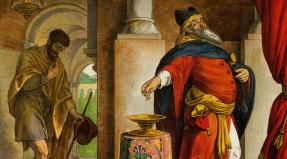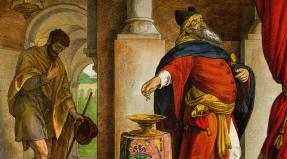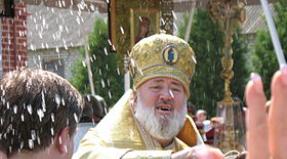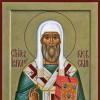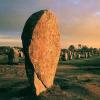Movement and rest are one and the same. Movement as a philosophical category. Movement and development, types of development (progress, regression). Movement and rest. The main forms of movement of the material world. Philosophy: Foundations of Ontology
Topic 2. Lesson 1. Question 4
The concept of movement and rest. The main forms of movement, their relationship and qualitative specificity.
With all the limited views on the essence of matter, philosophers
fow materialists of the ancient world, they were right in recognizing
the indissolubility of matter and motion. Thales has changes in the primary
noisy substance - water - led to the formation of various things; at Ge-
Raklita is a dialectical idea about the eternal changes of fire; Democritus and others
Some atomists proceeded from the fact that atoms are continuously moving in
Later, under the dominance of metaphysical and mechanical
views in philosophy, although superficially, was recognized as
jerkiness of matter and motion. It was the English philosopher D. Toland in
XIII century expressed the conviction that "movement is a way of existing
matter. "This idea was taken up and developed by the French
thermalists.
The very concept of "motion", like the concept of "matter", is an absolute
traction. There is no movement as such, but there is a movement of specific ma-
terial items.
Based on the development of private sciences, analysis of philosophical ideas
their predecessors, the creators of dialectical materialist philosophy
philosophies deepened understanding of the essence of movement, its continuous connection
zi with matter, space and time. Dialectical material
lism claims that matter without motion is just as inconceivable as
motion without matter.
Philosophers who think metaphysically if they understood movement
as soon as mechanical, they saw the reason for the movement in external conditions
activities. On this basis, the idea of a first impulse (Newton) arose, which
toraya could well be combined with the recognition of some mysterious
strength and even with the existence of God.
From the point of view of dialectical materialism, the causes of movement
matter exist inside it, are determined by its internal counter-
speech, the presence of such opposites as variability and
stability, attraction and repulsion, the contradiction between becoming
eye and new, simple and complex, etc. So the movement is
the result of the internal activity of matter, the unity of contradictions,
there is its self-movement. Bifurcation of one into opposites and
the struggle between them reveals the source of self-motion of matter.
The concept of self-propulsion of matter is a logical conclusion from the very
the essence of dialectics, the main principles of which are the
ny of universal communication and development. Dialectical-materialistic con-
the sense of movement overcomes the mechanistic and metaphysical
understanding movement as soon as simply moving objects around
relative to a friend, like moving along vicious circle with return to
starting position, as soon as purely quantitative or only as
qualitative changes. From a dialectical-materialistic point of view
any object at rest in relation to some
bodies, is in motion in relation to other bodies. Moreover,
within each object there are continuous changes and processes
sy, the interaction of their internal parts (elementary particles,
lei), the transition of particles into fields and vice versa, which is the internal
the reason for their changes, the reason that any thing in every
the moment of time is the same and at the same time already different. From ska-
This implies that "movement refers to all sorts of changes and
processes in the Universe, ranging from simple movement and ending with a mouse
indolence. "And this is an endless process, this is the essence, this is the basis and
the reason for the existence of an infinite variety of things, uniting
under the general concept of "matter". As you can see, if we assume it is impossible
possible absence of motion, then matter would be
full of all certainty, dead, lifeless, completely deprived
mass activity. It is thanks to the motion that matter differs
renders, there is a continuous emergence and destruction
the whole variety of objects and phenomena. Movement is a way of being
of matter, and, therefore, to be, to exist is to be
involved in the process of change, in movement. This means that
motion is absolute, like matter. But this does not exclude recognition
the relativity of motion in various specific cases. For example,
mechanical movement of one object relative to another, or
interconversion of specific elementary particles of a given state
in relation to their other state. So, the annihilation of an electron and
positron leads to the appearance of two protons. Here we see the difference
the final result in relation to the initial state of the element
container particles.
Recognizing the absoluteness of movement, dialectical materialism
does not deny its opposite - peace. Peace is understood as
the immutability of things, their stability, temporary unity is opposed
falsities, balance, preservation of things and their states. If you move
zenie is the cause of the emergence of specific, qualitatively
personal belongings, then peace is the reason for the preservation of the relative
stability of these specific things, a condition for their existence. If
imagine that the state of rest does not exist, then all material
Riya will have to be presented as something chaotic, devoid of any
certainty, qualitatively indistinguishable. Thus, thanks to
movement, concrete, qualitatively different objects are formed, and
due to the state of rest, they exist for some time in a certain
lonely condition and in a known place. For example, P-meson "lives"
total О, 2 5. 01О 5-6 0 s. This is a very short time, but during this time
nor does he remain himself. Thus, the state of rest, consisting
Time balance is, like movement, necessary
condition for the differentiation of matter.
At the same time, it is important to note that the very possibility of rest, from-
the relative stability of things is determined by the movement of matter. Not
there would be movement, there would be no qualitatively different objects, no
there would be balance, stability, etc. there would be no
koya. This once again leads to the idea that "the movement is absolute, and
which is relative. "And if you can to some extent talk about the absolute
fierce rest, then only in terms of the need for universal time
the existence of specific things.
Unlike mechanistic materialism, which absolutizes
a mechanistic form of movement that extends it to any
terial education, dialectical materialism, based on the
movement of the entire totality of sciences, considers movement in everything
the diversity of its forms and in the mutual transitions of the latter. Wherein
important is the statement that each form of movement has a definite
divided material carrier.
For the first time, a clear classification of the main forms of movement, and through
Engels gave it and the classification of sciences. He identified five main
forms of movement of matter: mechanical, physical, chemical, bio-
logical and social.
The criterion for distinguishing these forms of movement is the connection between each
of them with certain material carriers. At the same time, each
giving the basic form is characterized by the corresponding laws,
acting at one or another structural level of matter.
simple. A more complex form of movement is not just arithmetic.
a sum of simpler, but a qualitatively new, synthetic form
movement.
Engels identified 5 main forms of movement:
1. Mechanical
2. Physical
3. Chemical
4. Biological
5. Social
All these forms of movement are interconnected and more
simple ones enter more complex ones, forming a qualitatively different form
movement. Each of these forms includes an infinite variety of
in types of movement. Even, according to Engels, the simplest mechanical
includes such types of movement as uniformly rectilinear,
uniformly accelerated (slowed down), curvilinear, chaotic and
The most complex form of movement is social, because
the material carrier is the most complex type of matter - social.
This form of movement also includes changes in the body.
an individual person. So, the human heart is a mechanical movement
gatel, which ensures the movement of blood in the vessels. But it's not clean
mechanical engine. Its activity is regulated by mechanisms
higher nervous activity of a person. And the vital activity of the
ma - a condition for a person's participation in work, in public life. Here
includes changes in social groups, strata, classes, ethnic
changes, demographic processes, development of productive forces and
industrial relations and other changes determined by law
us movement at the social level of matter.
It should be emphasized that various forms of movement are capable of
pass into each other in accordance with the laws of conservation of material
rides and movements. This is a manifestation of the property of indestructibility and non-
the co-creation of matter and motion.
The measure of the movement of matter is energy, the measure of rest, inert
nosti - mass.
Classification of the main forms of motion of matter, developed by
Engels, relied on the achievements of the sciences of the 19th century. Staying true to
in principle, it should nevertheless be clarified and developed
vita in connection with the development of natural and social sciences.
The development of quantum mechanics has raised the question of analyzing a new
the main form of motion - quantum-mechanical, which, apparently,
by far the simplest. In the development of ideas
about the main forms of movement, we are currently talking about geological
physical, cosmic forms of movement that have specific material
nal carriers studied by modern sciences - physics, astro-
physics, geology. Thus, the development of modern science is
children to enrich our knowledge of the basic forms of movement. To that
but now there is a problem of understanding the nature of special biofields,
"read" by psychics, clairvoyants, and, therefore, becomes
the urgent problem of the further development of the doctrine of the forms of movement,
considered so far mysterious and inexplicable. So, are confirmed
guesses, formulated at the beginning of the twentieth century, that nature will
many more outlandish things have been discovered. All of the above testifies
that the world is fundamentally cognizable, although each step is
the twists of our knowledge expands the area of the unknown, sets new
Problems.
Attempts to separate motion from matter were made by natural
nicknames and philosophers, starting from the middle of the XIX century.
So, Oswald, trying to create a new philosophical direction,
concluded that the primary substance, the origin of all substances
is energy. This direction in philosophy was named
"energetism". Prominent physicists and philosophers opposed him
of that time, in particular, Planck, Lebedev, etc.
The epistemological roots of "energetism" are in the absolutization of movement.
energy as a measure of motion, in their separation from matter.
The other extreme in philosophy is an attempt to absolutize
resting state. In the middle of the XIX century. famous scientists Thompson and Cla-
Uzius discovered the second law (second law) of thermodynamics, the essence of which
which is that the process of heat transfer from one body to
the other is irreversible and is always directed from a warmer body to a more
cold.
Based on this law, Clausius concluded that all types
energy will eventually turn into heat, and heat energy, into
force of this law, will be uniformly dispersed in the Universe, which
he imagined it as a closed system, and there will come a common energy
equilibrium, the movement will stop and there will be an absolute
coy and "heat death" of the Universe.
This theory was opposed by Engels, physicists Smoluchowski,
Boltzmann, Tsiolkovsky and others.Engels, arguing dialectically, considered
tal that there is a continuous and eternal cycle in the Universe
matter and energy. Based on the qualitative side of the law,
injury and transformation of energy, he believed that radiated into space
warmth should be able to transform into other
forms of movement. And this was confirmed by the work of the Soviet academician
Ambartsumyan, who showed that the stars not only cool down and
go out, but also reappear.
A great contribution to the refutation of the theory of "thermal death" of the Universe
Noah was introduced by the Austrian physicist Boltzmann, who established the statistical
the nature of the second law of thermodynamics. Fluctuations were discovered
inverse to damping processes in the Universe. Tsiolkovsky expressed
confidence in the eternal youth of the universe. Developing this theory,
Soviet physicists I.P. Plotkin, K.P. Stanyukovich, Ya.P. Terletsky on the basis of
new statistical physics prove that our Universe is not
is a closed system and, therefore, Clausius's conclusions to it
are not applicable. In addition, the universe is not only thermodynamic
which system, but also gravitational, mesonic, electronic, etc. And
this multifaceted status of it ensures mutual transitions of energy,
eliminating the possibility of one-sided transformation of all types of energy
only in the heat. For example, the German physicist Nernst,
the opposite of radioactive decay, expressed confidence,
that the universe can never become a dead graveyard.
And the last important philosophical argument. Since matter
eternal and endless, then in this eternity an infinite number of times
a state of absolute rest could have come. And this is not the case
gone. Thus, dialectical-materialistic views are not
admit the possibility of thermal death of the universe.
In the world there is nothing but moving matter, wrote Lenin, and
this latter moves in space and time.
The concept of movement and rest. The main forms of movement, their relationship and qualitative specificity.
For all the limited views on the essence of matter of the materialist philosophers of the ancient world, they were right in recognizing the inseparability of matter and motion. In Thales, changes in the primary substance - water - led to the formation of various things; at Ge-
Raklita is a dialectical idea of eternal changes in fire; Democritus and other atomists proceeded from the fact that atoms are continuously moving in
Later, under the predominance of metaphysical and mechanical views in philosophy, although superficially, the indissolubility of matter and motion was recognized. It was the English philosopher D. Toland in
XIII century expressed the conviction that "motion is a way of existence of matter." This idea was taken up and developed by the French materialists.
The very concept of "motion", like the concept of "matter", is an abstraction. There is no movement as such, but there is the movement of specific material objects.
On the basis of the development of private sciences, analysis of the philosophical ideas of their predecessors, the creators of dialectical materialist philosophy deepened their understanding of the essence of motion, its continuous connection with matter, space and time. Dialectical materialism claims that matter without motion is just as inconceivable as
motion without matter.
Philosophers who think metaphysically, if they understood movement as only mechanical, saw the cause of movement in external circumstances. On this basis, the idea of a first impulse (Newton) arose, which could well be combined with the recognition of some mysterious force and even with the existence of God.
From the point of view of dialectical materialism, the reasons for the movement of matter exist inside it, are determined by its internal contradiction, the presence of such opposites as variability and
stability, attraction and repulsion, contradiction between old and new, simple and complex, etc. Thus, motion is the result of the internal activity of matter, the unity of contradictions,
there is its self-movement. Bifurcation of one into opposites and
the struggle between them reveals the source of self-motion of matter.
The concept of self-motion of matter is a logical conclusion from the very essence of dialectics, the basic principles of which are the principles of universal connection and development. The dialectical-materialist concept of movement overcomes the mechanistic and metaphysical understanding of movement as soon as a simple movement of objects relative to each other, as a movement in a vicious circle with a return to
starting position, as soon as purely quantitative or only qualitative changes. From the dialectical-materialistic point of view, any object that is at rest relative to some bodies is in motion with respect to other bodies. Moreover,
inside each object there are continuous changes and processes, interactions of their internal parts (elementary particles, fields), the transition of particles into fields and vice versa, which is internal cause their changes, the reason that any thing at each moment of time is the same and at the same time already different. From what has been said it follows that "movement is called any changes and processes in the Universe, starting from simple movement and ending with thinking." And this is an endless process, this is the essence, this is the basis and
the reason for the existence of an infinite variety of things, united by the general concept of "matter". As you can see, if we assume that the absence of motion is impossible, then matter would represent a mass devoid of any certainty, dead, lifeless, completely devoid of activity. It is thanks to motion that matter is differentiated, there is a continuous emergence and destruction of the entire variety of objects and phenomena. Movement is a way of existence of matter, and, therefore, to be, to exist means to be involved in the process of change, in movement. This means that motion is absolute, like matter. But this does not exclude the recognition of the relativity of motion in various specific cases. For example,
mechanical movement of one object relative to another or interconversion of specific elementary particles of a given state in relation to their other state. So, the annihilation of an electron and
positron leads to the appearance of two protons. Here we see the difference in the final result in relation to the initial state of elementary particles.
While recognizing the absoluteness of motion, dialectical materialism does not deny its opposite — rest. Peace is understood as the immutability of things, their stability, the temporary unity of opposites, balance, the preservation of things and their states. If movement is the cause of the emergence of specific, qualitatively different things, then rest is the reason for the preservation of the relative stability of these specific things, a condition for their existence. If we imagine that the state of rest does not exist, then all matter will have to be presented as something chaotic, devoid of any certainty, qualitatively indistinguishable. Thus, due to the movement, concrete, qualitatively different objects are formed, and
due to the state of rest, they exist for some time in a certain state and in a certain place. For example, P-meson "lives"
total О, 2 5. 01О 5-6 0 s. This is a very short time, but during this time he remains himself. Thus, a state of rest, a state of temporary equilibrium is, like movement, a necessary condition for the differentiation of matter.
At the same time, it is important to note that the very possibility of rest, the relative stability of things is determined by the movement of matter. Not
there would be movement, there would be no qualitatively different objects, there would be no balance, stability, etc. there would be no rest. This once again leads to the idea that "motion is absolute, and rest is relative." And if it is possible to some extent to speak about the absoluteness of rest, then only in terms of the need for the universal temporary existence of specific things.
In contrast to mechanistic materialism, which absolutizes the mechanistic form of movement, extending it to any material formations, dialectical materialism, proceeding from the achievements of the entire totality of sciences, considers movement in all the diversity of its forms and in the mutual transitions of the latter. At the same time, it is important to state that each form of movement has a certain material carrier.
For the first time F. Engels gave a clear classification of the main forms of movement, and through it the classification of sciences. He identified five main forms of motion of matter: mechanical, physical, chemical, biological and social.
The criterion for distinguishing these forms of movement is the connection of each of them with certain material carriers. At the same time, each basic form is characterized by corresponding laws,
acting on one or another structural level of matter.
Engels identified 5 main forms of movement:
- 1. Mechanical
- 2. Physical
- 3. Chemical
- 4. Biological
- 5. Social
All these forms of movement are interconnected and the simpler ones are included in the more complex ones, forming a qualitatively different form of movement. Each of these forms includes an infinite variety of types of movement. Even, according to Engels, the simplest mechanical movement includes such types of movement as uniformly rectilinear,
uniformly accelerated (slowed down), curvilinear, chaotic and
The most complex form of movement is social, because
the material carrier is the most complex type of matter - social.
This form of movement also includes changes in the body of an individual person. So, the human heart is a mechanical engine that ensures the movement of blood in the vessels. But this is not a purely mechanical engine. Its activity is regulated by the mechanisms of human higher nervous activity. And the vital activity of the organism is a condition for a person's participation in labor, in social life. This includes changes in social groups, strata, classes, ethnic changes, demographic processes, the development of productive forces and
production relations and other changes determined by the laws of motion at the social level of matter.
It should be emphasized that various forms of motion are capable of transforming into each other in accordance with the laws of conservation of matter and motion. This is a manifestation of the property of indestructibility and non-creation of matter and motion.
The measure of the movement of matter is energy, the measure of rest, inertia is mass.
Classification of the main forms of motion of matter, developed by
Engels, relied on the achievements of the sciences of the 19th century. Staying true to
in principle, it should nevertheless be clarified and developed in connection with the development of natural and social sciences.
The development of quantum mechanics has raised the question of analyzing a new basic form of motion - quantum mechanical, which, apparently,
by far the simplest. In the development of ideas about the main forms of motion, we are currently talking about geological, cosmic forms of motion, which have specific material carriers, studied by modern sciences - physics, astrophysics, geology. Thus, the development of modern science leads to the enrichment of our knowledge about the basic forms of movement. In addition, now there is a problem of understanding the nature of special biofields,
"read" by psychics, clairvoyants, and, therefore, the problem of further development of the doctrine of the forms of movement becomes urgent,
considered so far mysterious and inexplicable. Thus, the guesses formulated at the beginning of the twentieth century are confirmed, that many more outlandish things will be discovered in nature. All of the above testifies
that the world is fundamentally cognizable, although each step in the development of our cognition expands the area of the unknown, poses new problems.
Natural scientists and philosophers attempted to separate motion from matter, beginning in the middle of the 19th century.
So, Oswald, trying to create a new philosophical direction,
concluded that the primary substance, the origin of all substances, is energy. This direction in philosophy was named
"energetism". The most prominent physicists and philosophers of that time, in particular, Planck, Lebedev, and others, opposed him.
The epistemological roots of "energetism" are in the absolutization of motion, energy as a measure of motion, in their separation from matter.
The other extreme in philosophy is an attempt to absolutize the state of rest. In the middle of the XIX century. famous scientists Thompson and Clausius discovered the second law (second law) of thermodynamics, the essence of which is that the process of heat transfer from one body to
the other is irreversible and always directed from a warmer body to a colder one.
Based on this law, Clausius concluded that all types of energy will eventually turn into heat, and heat energy, into
the force of this law will evenly dissipate in the Universe, which he represented as a closed system, and general energy equilibrium will come, motion will stop and absolute rest and "thermal death" of the Universe will come.
This theory was opposed by Engels, physicists Smoluchowski,
Boltzmann, Tsiolkovsky and others. Engels, arguing dialectically, believed that there is a continuous and eternal circulation of matter and energy in the Universe. Based on the qualitative side of the law of conservation and transformation of energy, he believed that heat radiated in space should be able to transform into other forms of motion. And this was confirmed by the work of the Soviet academician
V. Ambartsumyan, who showed that the stars not only cool down and
go out, but also reappear.
The Austrian physicist Boltzmann, who established the statistical character of the second law of thermodynamics, made a great contribution to the refutation of the theory of "thermal death" of the Universe. Fluctuations were discovered
inverse to damping processes in the Universe. Tsiolkovsky expressed confidence in the eternal youth of the universe. Developing this theory,
Soviet physicists I.P. Plotkin, K.P. Stanyukovich, Ya.P. Terletskiy, on the basis of statistical physics, prove that our Universe is not a closed system and, therefore, Clausius's conclusions are inapplicable to it. In addition, the Universe is not only a thermodynamic system, but also a gravitational, mesonic, electronic, etc.
this multifaceted status of it ensures mutual transitions of energy,
eliminating the possibility of one-sided transformation of all types of energy only into heat. For example, the German physicist Nernst, admitting a process opposite to radioactive decay, expressed confidence,
that the universe can never become a dead graveyard.
And the last important philosophical argument. Since matter is eternal and infinite, then in this eternity an infinite number of times could come a state of absolute rest. But this did not happen. Thus, dialectical-materialistic views do not admit the possibility of thermal death of the Universe.
In the world there is nothing but moving matter, wrote Lenin, and
this latter moves in space and time.
Rest
REST
a state that is the antipode of movement. Depending on the content invested in the term "movement", P. can be understood either in the narrow sense of the word, as immobility in space (if movement is interpreted as mechanical displacement), or in a broad sense, as immutability in general - if movement is interpreted as change generally. In the latter case, concepts such as constancy, stability, conservation are close to the concept of P. In ancient Greek philosophy, the state of P., which was considered (as opposed to movement) self-explanatory and did not require explanation, acted (for most ancient Greek philosophers) as an attribute, to which more creatures were attributed to the attribute of movement. role. This also manifested itself in the ontological. plan (the problem of an eternal and qualitatively unchanging principle among the Milesians, the eternity and immutability of ideas in Plato and atoms in Democritus, the immobility of the Aristotelian prime mover), and in the moral and ethical (ataraxia), and in the logical (the requirement to explain the movement with the help of P. in Zeno's aporias Eleisky). With the development of philosophy and science, the privileged status of P. in comparison with the movement was gradually lost, and the very problem of "movement - P." more and more concentrated within the framework of mechanics, branching off from closely related problems of the one and the many, identity and difference, general and individual, continuous and discrete, infinite and finite. Already in Descartes, movement and P. are ontologically equal as qualities. The Galilean principle of relativity fixes the equality of the states of P. and uniform rectilinear motion more clearly, opening the way for the interpretation of P. and movement not as characteristics of the body, but as characteristics of the relation of the body to other bodies. Mat. apparatus of Newtonian mechanics (differential calculus), specially created for solving problems related to mechanical. movement, delivered the means allowing to move from the description of the state of P. to the description of the state of movement and back bypassing the logical. difficulties fixed in Zeno's aporias, and prepared the conditions for giving the concept of movement a logical one. primacy in comparison with the concept of P., and movement - ontological. primacy in comparison with P. This was then fixed in the well-known position of dialectics about the absoluteness of motion and the relativity of P. If the state of motion is considered primary, then P. as a characteristic of the relationship between bodies is easily explained with the help of motion: two bodies rest relative to each other if they they move in the same way relative to a certain third body, which acts as a frame of reference. Understanding P. and movement as characteristics of the relationship of material objects to a certain frame of reference is preserved in the present. physical theories (special and general relativity theory, quantum mechanics, quantum field theory), philosophy. the problems of which, connected with the concept of P., are grouped around the concepts of stability, preservation of invariance, already noted above.
Lit .: Engels F., Dialectics of Nature, M., 1964, p. 70, p. 213; Aristotle, Physics, M., 1937, p. 52, 120-23, 131, 141-43, 168, 172-75; Hegel G., Soch., Vol. 2, M. - L., 1934, p. 64–65, vol. 6, M.–L., 1939, p. 171-80; R. Descartes, Fav. manuf., M.,, p. 199, 477, 479, 497; Locke D., Fav. Philos. Prod., t. 1, M., 1960, p. 153, 155, 160, vol. 2, M., 1960, p. 469; Grigoryan A.T., Zubov V.P., Essays on the development of basic concepts of mechanics, M., 1962, p. 19-59; Kant I., Soch., V. 1–2, M., 1963–64 (see the subject of the index); Hobbes T., Fav. Prod., vol. 1, Moscow, 1964 (see the subject index).
Philosophical Encyclopedia. In 5 volumes - M .: Soviet encyclopedia . Edited by F. V. Konstantinov. 1960-1970 .
See also `Peace` in other dictionaries
rest Obsleslav. Formed from rest(cf. Czech. kojiti"Calm down"), the same root as to rest, lat. quies"Calmness, sleep, peace", bedchamber. School etymological dictionary of the Russian language. The origin of words. - M .: Bustard N. M. Shansky, T. A. Bobrova 2004
I, m. 1. The state of relative immobility, lack of movement (special). 2. A state of silence, rest, inactivity, lack of anxiety. The patient needs p. There is no rest from the neighbors. Leave smb. alone (do not disturb). Eternal p. (Trans .: death; obsolete). To retire for a p. Or live in peace (to stop serving, to work; outdated.). 3. In plants: a condition when the intensity of vital activity decreases (special). After the leaves fall, the trees are dormant. * Rest mass (spec.) - the mass of a particle in the state at which it is at rest. Someone has forgotten peace and sleep about someone who is deeply concerned, worried about something. REST 2, -ya, m. The old name of the letter "p". Put the tables at rest (in the form of the letter "p").
rest rest genus. n. -oya, ukr. (с) пкiй, -óyu, Old Russian. chambers, art. - glory. chambers ἀνάπαυσις, ἄνεσις (sup.), bulg. rest, Serbo-Horv. forkȏj "calmness", Slovenian. pókoj, genus. n. -ója, czech, slvc. rokoj, Polish. pokój, -oju "peace; room", v.-puddle., n.-puddle. rokoj. Dr. stage of vocalism: art-slav. honor (see honor), related to lat. quiēs, -ētis f. "calmness, sleep, peace", quiētus "calm", requiēscō "resting", goth. ƕeila "time, leisure", avest. suāt- "delighted"; see Trautman, BSW 124; Walde-Hoffmann 2, 406; Meie-Ernu 984; Bernecker 1, 166, 538 et seq. From here to rest. Etymological dictionary of the Russian language. - M .: Progress M. R. Fasmer
rest
Inaction, inertia, laziness, immobility, inertia, keif, doing nothing. Wed ... See inaction, laziness, peace, rest, silence; room..
disturb the peace, give no peace, no peace, leave alone ....
Dictionary of Russian synonyms and expressions similar in meaning.- pod. ed. N. Abramova, M .: Russian dictionaries, 1999rest
-I am
,
m. Lack of movement and noise. [I] raised my eyes to the sky - but there was no rest in the sky either: speckled with stars, it kept moving, moving, shuddering. Turgenev, Asya. [Everything] was enveloped in that peaceful, drowsy calm that occurs only in autumn, when the earth has grown everything that it had to grow, and the people removed everything that had to be removed, and it was time for rest. Zakrutkin, Creation of the World. || Immobility. There is no absolute peace in nature. Remove the body from a state of rest.
rest Rest
1.
REST-I am; m. 1.
Lack of movement, noise. All around n reigns. Nothing will disturb my peace. Peace is enveloped in the earth. To breathe, breathe in peace. //
Immobility. There is no absolute peace in nature. Remove the body from a state of rest. 2.
Calm mental and physical condition. Lose, lose p. Get p. Bring p. Violate the family, spiritual p. Not knowing, not knowing, not finding peace. The patient needs a complete p. ... 1. The letter of the Cyrillic alphabet. rest Absolute peace Serene peace Deep peace Deadly rest Dead rest Complete rest Perfect rest
2. Foster ...
3. Movement at zero speed.
4. Peace with oneself and truce with others.
5. What does your heart not want in a song?
6. What do we dream about during the eternal battle?
7. The best medicine for concussion.
8. The story of the Russian writer L. Andreev.
9. State of tranquility.
10. The patient needs him.
Rest plants, fiziol. a state when the growth rate and exchange in - in sharply decrease; it is expressed in a delay in the germination of seeds, tubers, bulbs, bud opening and the cessation of the growth of the p-tion. In the absence of visible growth during P. in the cone of growth of the shoot, intensive synthetic proceeds. activity. If at optim. ext. P. conditions does not stop, it is called. deep, if in these conditions growth is resumed, P. is called. forced. Deep P. is determined by vnutr. reasons (high content of growth inhibitors), forced - unfavorable externals. conditions. In woody districts (including fruit districts), with the establishment of low temperatures (in the fall), deep P. occurs, to-ry is a necessary condition for subsequent normal vegetation and fruiting. Phytohormones play an important role in P.'s regulation ...
rest Old Russian - calm down (calm down). Old Slavonic - chambers. Common Slavic - pokoj. Like many words that came from the Common Slavic to the Old Russian language, the word "peace" became widespread in the 11th century. Related are: Ukrainian - leave. Belarusian - spakoy. Bulgarian - peace. Slovenian, Czech, Polish - pokoj. Derivatives: 1. m. 1) a) A state of relative immobility, lack of movement. b) transfer. The state of a plant in which its growth is suspended. 2) Lack of movement and noise; silence. 3) a) transfer. Lack of worries, doubts, worries, etc .; calmness. b) Inaction. 2.m. Is outdated. Living room in the house. 3. m. The name of the letter of the ancient Slavic or old Russian alphabet.
Movement is the process of mutual influence of contacting bodies on each other through the transfer of matter, energy or information. Movement is a dialectically contradictory unity of such opposites as variability and stability, reversibility and irreversibility, stationarity and nonstationarity, cyclicity and renovation. Strictly speaking, logically, the antipode of rest is not movement, but change, since in every movement there are moments of both change and immutability, rest. For the measure of motion in physics, they take indestructible energy, capable of assuming various and quantitatively equivalent forms (recall the law of conservation and transformation of energy).
Ontologists-Marxists prefer to speak only about material movement (but not about the movement of the spirit), they absolutize the moment of change in movement and relativize the moment of rest. In Soviet philosophy, movement, as a rule, was simplistically understood as “change in general,” that is, as a quantitative or qualitative transition of material objects from one state to another. Meanwhile, in theoretical mechanics, the movement of a body by inertia (from lat. inertia- inaction) is practically indistinguishable from the state of dynamic rest.
The concepts of movement and rest have been defined in different ways in the history of theology, philosophy and science. According to Aristotle's Physics, the movable is always in contact with the mover, and movement is the result of the endless interaction of bodies. The stagirite believed that the primary source of activity is contained in an immaterial "form" that gives motion to all resting and amorphous matter. There are as many types of change, in his opinion, as there are types of existence, and the world can change an infinite number of times.
From a huge set of movements, it is advisable to isolate six main types of movement that are not reducible to each other: emergence, destruction, change in quality, increase, decrease, displacement (i.e., change in position: circular, rectilinear, mixed). Abstracting general features from them, Stagirite defined movement as interaction and change in general, and rest as the absence of influences and changes, that is, as any immutability.
These extremely broad definitions of movement and rest took root in European culture for twenty centuries, up to the 17th century. In the XVII-XVIII centuries. in European natural science (under the influence of the Christian Church, which fought against occultism and mysticism), mechanism was established. Stagirite's idea of quality different forms changes in matter began to be supplanted by a narrow and single-quality interpretation of motion as the spatial movement of things.
In modern times, mechanics has become a leader in the sciences, studying various ways of changing bodies of their places. The rest of the sciences focused on the paradigm of mechanism: they thought of movement as "atomic movement", and analytically transformed any complex movement into the sum of atomic displacements - forward, backward, rotational, etc.
The Deists claimed that the mechanism of the cosmos was once and for all set up by God. In the Divine first impulse, deism saw the source of the mechanical movement of bodies. Reductionism in the form of mechanism was theoretically based on the hypothesis of atoms and molecules falling in emptiness, as well as on the picture of the world as a machine, similar to a clock and built of moving levers, rolling balls, elastic springs, etc.
For example, Nicola Lemery (1645-1715) put forward an interesting mechanistic model of the emergence chemical compound... This French chemist reasoned like this. The atoms are endowed with either teeth, or hooks, or loops, etc. Particles of acids have points, which is easily proved by the fact that the acid produces a tingling sensation in our tongue, like the tingling of sharpened thin points. "... Silver dissolves in saltpeter alcohol ... because the points of the latter are thin and proportionate enough to penetrate into the small pores of this metal and move its parts apart."
Hobbes, one of the founders of mechanistic materialism, defined the essence of movement as a continuous change of places, that is, as leaving one place and reaching another. This process is continuous, for not a single body, no matter how small it may be, can immediately completely withdraw from its former place so that not a single part of it is in the part of space that is common to both places - abandoned and achieved.
In his "System of Nature" Holbach substantiates the thesis of motion as an attribute of matter. He writes that everything in the universe is in motion; the essence of nature is to act; if we begin to carefully examine its parts, we will see that among them there is not one that would be in absolute rest. Those who seem to us to be devoid of movement are in reality only in relative or apparent rest. Movement arises, increases and accelerates in matter without the intervention of any external agent.
At the end of the 18th - beginning of the 19th century. the weakness of a mechanistic explanation for chemical, biological and social phenomena becomes apparent. In The Philosophy of Nature, Hegel was perhaps one of the first to try to overcome the mechanistic interpretation of movement and to restore the Stagirite definition of movement as a change “in general”. The German dialectician deduces the diversity of movements from the premise of the progressive development of an absolute idea that has materialized in space and time.
Mechanical, chemical and organic essence are basic and not reducible to one another forms of ascent from lower to higher. "Mechanism -" chemism -> organism "- such is the Hegelian classification of the basic and progressively ascending forms of motion of matter. Hegel explains the peculiarity of each form by the specificity of its internal contradictions, starting with the different contradictions of attraction and repulsion.
In this regard, it should be noted that the Hegelian dialectical concept of the basic forms of movement and rest was curiously developed by the modern Russian philosopher V.V. Orlov. He summarized his considerations with the formula: V = H+ A, where V- higher, H- lower, a h- something new that was not in the lower before the higher was built over it. The concept of the higher, as well as the lower, is relative. Let's say the chemical is higher than the physical, but lower than the biological. The lower is the foundation of the higher. At the same time, the higher transforms and subjugates its foundation.
F. Engels qualifies movement as striving, tension and "torment" of matter. He writes: "Motion, considered in the most general sense, that is, understood as a way of existence of matter, as an attribute inherent in matter, embraces all changes and processes occurring in the universe, from simple movement to thinking." Engels develops, already within the framework of dialectical materialism, the Hegelian concept of the relationship between the higher and the lower in movement and identifies five main forms of movement: "mechanical -> physical -> chemical -> biological -> social." Each subsequent (higher) form arises as a result of self-development and the resolution of contradictions within the previous (lower) form. What is in common between moving and thinking is the change "in general".
The genetic chain of five basic forms of movement is designed to reflect, according to Engels, the main historical milestones in the evolution of our planet, the appearance of life and human thinking on it. Based on this classification, the classic of Marxism substantiates the materialist doctrine of the world as a single self-developing whole, of thinking as the highest form of motion of matter; he also curiously illuminates the problem of the relationship between the sciences studying the lower and higher types material interactions- the problem of their subordination, border contact and delimitation.
Engels's classification is now being supplemented with new discoveries in natural science: the movements of elementary particles and fields, biocenosis, galactic associations, etc. gravitational interactions, as well as interconversion of elementary particles. At the same time, mechanical aspects (microphysical and macrophysical) of the main forms of movement are distinguished.
Engels tied the classification of unidirectionally progressive movements to the history of the Earth. But in relation to matter-substance, he preferred the concept of world circulation. In his opinion, on a cosmic scale, progress and regression balance and cyclically replace each other, and therefore matter-substance as a whole is unchanged.
Modern scientists, followers of this concept, construct nonlinear (branching) schemes of the main forms of motion of matter, in which, for example, biological motion is derived from electromagnetic interaction and has no genetic connection with intranuclear and gravitational interactions (I. Ya. Loifman). Opponents of the vortex concept advocate single line upward diagrams of basic forms of movement. These schemes embody the images of the "arrow of progress", "pre-established world harmony", "world mainstream progress" (V.V. Orlov).
So, in modern Russian philosophy, movement and rest are often considered as paired categories, denoting such polarly linked moments of the existence of any certainty (thing) as variability and stability. The movement of a thing A there is a change in its properties I, a v ..., a n, caused by events inside it and / or the processes of its external interactions with other things.
Peace, on the contrary, is an aspect of stability and relative independence of a thing from internal and external influences, from changes in it. One or another degree of rest inherent in a changing A, is determined by the invariability of a greater or lesser set of its properties: a , a ^ .... a ... Ontological terms, physical movement-rest is considered the simplest and most fundamental. Social movement-rest is called the highest form of change and preservation, since it is thought of as absorbing and subordinating to itself physicochemical and biological types of variability and stability.
From the idea of the reflexivity of the categories of movement and rest follows the thesis about the possibility of comparing the main forms of movement (change) with the main forms of rest - physical, chemical, biological and social. Conservation laws (energy, momentum, charge, etc.) and physical constants play no less role in natural science than knowledge about the types of physical interactions.
In the well-known table of DI Mendeleev, various aspects of chemical rest are captured: the eternity of atomic hydrogen, the relative immutability of chemical elements, the stability of the parameters of chemical reactions; the name of this table - "Periodic Law" - indicates the beginning, essentially resting in the nature of chemical transformations. Biological movement presupposes biological rest (genotype stability, species invariability, habitat stability, homeostasis of the biological system, etc.). Social changes certainly take place in the forms of social rest (human reproduction, traditions, archetypes, schemes of activity, historical cycles).
The ratio in the movement of change and rest is multidimensional and in each thing is specific. Take, for example, a freely swinging pendulum. On the one hand, its fluctuations show equilibrium, periodicity, stability, repeatability, reversibility of movement from right to left and vice versa. On the other hand, in the displacements of the pendulum, we notice instability (non-equilibrium, irreversibility) caused by the gradual damping of its oscillations.
The measure of the reversibility and stability of any periodic change is indicated by the category of the cycle: cyclicity is a kind of resting oscillation. But there is also a measure opposite to cyclicality - renovation. Renovation is associated with the formation of the new in the repeating old and the imbalance.
Renovation (from English, renovation- renewal) is a measure of irreversibility in the processes of change. It is a vector quantity and is concretized by the concepts of progress and regression. Progress is usually called the ascent from the simple to the complex, from the lowest to the highest, and regression, on the contrary, is the descent from the complex to the simple and from the highest to the lowest. They also talk about one-plane irreversible change - intermediate between progress and regression (EF Molevich).
Since peace and change are reflexive categories, it is illogical to describe them separately, independently of each other. Peace in one respect necessarily turns out to be a change in another, and vice versa. For example, our city is at rest relative to the surface of the Earth, but rotates around the Earth's axis and moves in space relative to the Sun. It is possible to find other logical foundations (geometrical-mechanical, physicochemical, biosocial and spiritual) for the correlative description of the stable and changeable within our city.
There are two types of change and rest: 1) a quantitative change in a thing while maintaining its quality, and 2) a qualitative change in a thing. The concept of measure denotes the interval within which a change in quantity does not disturb the rest of quality. The concept of essence primarily reflects the idea of the general, constant, and the phenomenon - the idea of variability, birth and dying. Essence is deep peace, and phenomenon is surface change. But in essence there is a movement - a struggle of possibilities for the right to become reality; then essential peace is seen in the conditioning of this struggle by the underlying essence of a deeper order. Therefore, not only change, but also rest is an attribute of matter. Better in general to use the unified principle of movement as change-rest.
As already mentioned, energy is considered a measure of the relationship between change and rest in movement. Usually materialists define energy as a measure of only material movement. Apparently, this definition is narrow. First, variability is an attribute not only of matter, but also of consciousness. Our thoughts, mental and spiritual states are changeable no less than material objects. Secondly, it sometimes takes more energy to achieve and maintain a state of rest than to break it. Therefore, there is a need for a more general definition of the concept of energy, in which such categorical pairs as “variability and stability”, “differentiation and integration”, “opportunity and reality”, “quality and quantity” would be interconnected first. I propose a broad definition: energy is a measure of the variability of the one who is at rest and the stability of the changing one.
Some thinkers tend to explain the nature of things primarily by the principle of movement as change. They deduce the birth and disappearance of objects from the process of self-movement (self-change) and the resolution of internal contradictions. Others are inclined to explain phenomena through the principle of fundamental rest: every phenomenon is nothing more than a manifestation of some law of nature. Is it possible to build a coherent methodology of explanation based on the harmonization and synthesis of the principles of change and rest? This is not easy to do, but attempts are being made.
For example, in synergetics, theses about the emergence of the law of nature out of chaos and the fragility of physical laws - about their variability and the possibility of disappearing with time (I. Prigogine) were formulated speculatively (though still in favor of the principle of change). There is no doubt that in the future this kind of bias towards non-equilibrium will be compensated by the next theory of equilibrium, and then, as in the times of ancient philosophy, the attributes of change and rest will be harmonized in the picture of the universe.
In theoretical knowledge and description of phenomena, scientists are more often guided not so much by the changeable in the phenomena as by the general and stable in them: science is primarily interested in the forms of rest. Therefore, the classification of the main forms of dormancy should be attributed to the number of urgent methodological problems.
If in the formula V = H + AND exaggerate the // (inferior) value as a basis V(higher) and do not take into account the second term /?, then one can assess the pros and cons of natural-scientific reductionism. Its varieties: mechanism, physicalism (reduction of chemical, biological or social to physical movement-rest), chemism (reduction of biosocial quality to its chemical bases), biologization (an attempt to explain social change-conservation exclusively in terms of biological science).
The reductionist methodology, or merism (from the Greek (herod - part), is justified by the fact that without a thorough study of its constituent simple parts, a complex whole is in itself incomprehensible. Thus, chemical science is inconceivable without reliance on the laws of physics, modern successes biology is primarily indebted to the achievements of organic chemistry and biophysics. However, bringing down V to A, reductionism loses the opportunity to clarify the qualitative difference between the labor and consciousness of the human individual from the vital activity of the cell, and the latter from the variability-stability of the amino acid molecule, etc.
If, on the contrary, in the ratio formula V and I exaggerate the value of A and the question of the role of the simple in the complex and the lower in the higher to be taken out of the scope of scientific research, then you can get an idea of anti-reductionist methodology in the sciences. It is sometimes called holism, which proclaims that the whole
(Greek. oXoq) incomparably greater than the sum of its parts and cannot be reduced to its elementary components.
Holistic chemists question whether it is possible to understand the mystery of the interaction of chemical individuals in terms of physics. They often bring chemistry closer to art, but rather want to see themselves as alchemists. Vitalism (from lat. vitalis- vital) - the name of the holistic orientation in biology. The vitalist explains the essence and manifestation of life by the action of God, the immaterial life force, the soul, entelechy, etc.
Neovitalism appeared at the turn of the 19th and 20th centuries. in the writings of the embryologist G. Driesch and the physiologist J. Ixskull. Driesch taught about entelechy as the substance of life, and Ixskull - about the Subject-Plan, which is followed by living nature as a whole and each organism separately. H. Spencer replaced the reductionist image of a society-mechanism with a metaphor of a society-organism. On the basis of his theory of catastrophes, the mathematician R. Thom created the theory of morphogenesis, in which he combined vitalism and mechanism; he suggested that physicochemical changes in all organisms are due to the global "program" of the biosphere.
Humanitarian holistics considers human activity and inactivity as creative supranatural acts. Holism makes up for the disadvantages of reductionism, focusing on the study of the qualitative specifics of the higher, but its methodology is no less one-sided, since it does not take into account the fundamental role H v V.
The tendencies of reductionism are also opposite to Elevats and O NISM (from Lat. elevatio- I elevate), the main technique of which is the extension of the analogy "from above", from the highest to the lowest - from psychology, sociology, biology to inorganic natural science (for example, A. Bergson's idea of "life impulse"). Reductionism and holism, actually complementing each other, create natural-scientific conditions for their synthesis, the dialectical formula of which is B = H + h differently substantiated by Hegel and Engels. In general, in ontology, two opposing mindsets are constantly operating: organism and mechanism.
In the history of theology, philosophy and science, various extremely general formulas for the relationship between change and rest have arisen and compete.
"Peace is absolute, but change is relative." This formula is primarily characteristic of monotheism, although it is also shared by a number of pantheistic teachings. God is conceived by monotheists as transcendental being and creating the physical world out of nothing. The one and perfect God is eternal, for he is indivisible and unchanging, since all the fullness of being is realized in Him. The created world is imperfect, limited, and the processes of change in it contribute to its decomposition, disintegration. God keeps our world "until the time of the end", but sooner or later the end of the world will come.
In classical thermodynamics, such a view is indirectly supported by the "theory of the thermal death of the Universe" (60s of the XIX century; R. Clausius, W. Thomson), and in modern cosmology - by the "theory of the swelling Universe." In the 20s. last century E. Hubble discovered that galaxies scatter in different directions, like fragments of a grenade. In 1927 the Belgian priest and astronomer J. Meter, having visited the Hubble Observatory at Mount Wilson in California, extrapolated the motion of galaxies in the opposite direction and came up with the Big Bang. In 1931 he published a hypothesis according to which the world originated from an exploded "first atom". “The formation of the world,” wrote Lemegre, “can be compared with a burnt-out salvo of fireworks. We stand on the cooled lava and watch the sun go out slowly. " Lemaitre's hypothesis has now become a generally accepted theory.
Thus, in the formula under discussion, physical movement is transient, has a beginning and an end, is associated with relative rest; on the contrary, true transcendental peace is eternal and absolute.
"Movement as change is absolute, peace does not exist." This formula was defended, for example, by the ancient Greek philosopher Kratilus. Compounding, in the spirit of extreme relativism, the well-known dictum of Heraclitus that one cannot enter the waters of the same river twice (“everything flows, everything changes except the Logos”), Cratilus declared that this cannot be done even once, because while you are entering into the river, its waters become different. From the idea of the general fluidity of things, he concludes that things do not have any qualitative definiteness, rest.
But nothing can be said about fluid at all, or anything can be said. If there is nothing stable in the continuous stream of changes, there are no distinguishing things, then there is nothing to cognize: nothing will be imprinted in the corresponding stream of consciousness. So far, people have learned to rationally cognize movement only by dividing the changing into resting segments and summing up the state of rest. Bergson spoke of movement as a living stream, in which there is no certainty.
"Movement as change is absolute, rest is relative." This formula is preferred by those pantheistic materialists who set themselves the task of explaining the history of the universe as an eternal process of one-sided self-development of substance from lower to higher. To solve this problem, it is necessary in the categorical pair "change - peace" to declare change as a constantly leading, eternal and unconditional element, and peace - subordinate, transitory, auxiliary and conditional.
In the Marxist-Leninist philosophy and the sociocentric religion of Sovietism, this model fulfills the most important ideological function: a) the cosmos spontaneously evolves from elementary particles to the shining heights of communist society;
- b) mainstream progress is ensured by its driving internal contradictions, and constant development is ensured by outweighing one of the sides of the driving contradiction;
- c) in the contradiction of change and rest, the first ultimately prevails over the second.
- "There is no change, there is only peace." This model was originally substantiated by the Eleatics, especially by Zeno. Zeno's aporias ("Dichotomy", "Achilles", "Arrow" and "Stages") are called upon to substantiate the theory of his teacher Parmenides about the One. Zeno rejects the conceivability of sensible being, the plurality of things and their movement. Some schools of Buddhism are characterized by the assertion that the visible world of changes is just an appearance (maya), while the true world is eternal and undisturbed peace (nirvana).
- "Movement as change and peace are equal sides of the Absolute." In Europe, this formula was first philosophically substantiated by the mystic Heraclitus (fire is a symbol of eternal change, and Logos is an eternally unchanging law of motion). In the world as a whole, neither change nor calm prevails. They are balanced as facets of the fullness of being, the world as a whole; therefore arche (substance) does not "develop" anywhere, does not ascend or descend. Nevertheless, in any particular thing, in each individual, their ratio does not have to be balanced and harmonious - it varies, shifts either towards variability or towards the pole of stability.
In ancient China, a similar model was put forward by Lao Tzu, the founder of the religious and philosophical teachings of Taoism. The Tao symbol in the form of a circle, divided in half by a serpentine diameter, successfully embodies the idea of a periodic change of the dominants of yin and yang; the circle symbolizes eternal rest, and the snake-diameter hints at eternal change. This kind of model of substantial harmony of change-rest within movement is the most paradoxical and dialectical.
As you can see, the pluralism of religious and philosophical teachings is associated with different models of the relationship between change and peace. Let us repeat that the monotheism of Jews, Christians and Muslims is based on the principles of the relativity of movement as a change (the beginning and end of movement) and the absoluteness of rest. In one way or another, these principles define the general logic of the cosmological argument.
- For criticism of this understanding, see: Sagatovsky V.N., Fundamentals of systematization of universal categories. Tomsk, 1973. S. 171-12; Mokhorya EP On the relationship between the categories "movement" and "change" // Philos. science. 1989. No. 10. S. 102-105.
- Cit. Quoted from: V.P. Zubov. Development of atomistic concepts before the beginning of the 19th century. M, 1965.S. 241.
- See: Orlov V.V. Fundamentals of Philosophy. Issue 2. Part 1. Perm, 1997. S. 49-55.
- K. Marx, F. Engels Works. 2nd ed. T. 20.P. 563.
- This measure is sometimes inaccurately called development, or evolution, although the meaning of development, strictly speaking, is not in the emergence of a new one, but only in the deployment of what was once collapsed.
The problem of freedom in philosophy
The question of freedom in philosophy is considered, as a rule, in relation to a person and his behavior (freedom in nature was considered as an accident, as " unrecognized necessity It took shape in such philosophical issues as freedom of will and responsibility of a person, the likelihood of being free, the designation of freedom as a force that regulates social relations. No philosophical problem has probably had such a great public and political significance in the history of society, as a matter of freedom.
Picture 1.
For a person, the possession of freedom is a historical, social and moral imperative (command), a criterion for her individuality and the level of formation of society. Arbitrary restriction of personal freedom, serious regulation of its reason and behavior, the rapprochement of a person to the birth of a simple "tool" in social and technological structures inflicts a lot of damage on both the individual and society. Finally, it is thanks to the freedom of the individual that the collective gains the opportunity not only to adapt to the existing natural and social circumstances of the surrounding reality, but also to transform them in accordance with its final tasks. A certain material owner of freedom, its subject is always a person, and, accordingly, those collectives in which it is included - nations, social groups, classes.
Philosophical solution to the question of freedom and need, their relationship in the activity and behavior of the individual is of great practical importance for assessing all the actions of people. Neither morality nor law can circumvent this problem, for without accepting the freedom of the individual there can be no talk of his moral and legal responsibility for his sins. If individuals do not have freedom, but act only out of need, then the question of their responsibility for their behavior loses all meaning, and "gratitude according to merit" is transformed either into arbitrariness or luck.
Space in philosophy
Definition 1
Space- the extent, the container in which objects are located and events take place. In philosophy, discussions continue as to whether space is a separate entity or just a form of existence of matter. Space characterizes the coexistence of objects, their length and structure, mutual arrangement.
The space available to our senses is three-dimensional... The mutual arrangement of objects in it is characterized by distance and direction. In physics, space is combined with time into a single space-time.
The debate about the nature and essence of space began in antiquity. Plato meant space (chorus) as a receptacle or gap, Aristotle as a place. The Arab thinker Alhazen tried to define space due to expansion. A new reformulation of the concept of space occurred in the $ 17 $ century. It became the century of the formation of classical mechanics. Its creator, Isaac Newton, considered space as absolute, that is, it exists regardless of whether there are physical bodies in it. In contrast, Leibniz characterized space only through the relationship between bodies: distance and direction. At $ 18 $ per. the analysis of the essence of space was made by Immanuel Kant, who was primarily interested in the question of whether it is possible to know space only empirically, through experience. Kant came to the conclusion that space is a purely a priori concept, which means that a person cannot perceive the world differently, as through space.
At $ 19 $ and $ 20 st. the understanding of space in physics has changed. With the construction of the theory of relativity, space began to be considered inherently from time as space-time. The geometry of the space is non-Euclidean, in particular, it can bend near massive bodies. The development of quantum mechanics and quantum field theory raised the question of the nature of the vacuum, that is, space in which there are no fields or particles. However, many important issues related to vacuum, in particular the issue of the energy of the vacuum, remain unresolved until now.
Time in philosophy
Definition 2
Time- the form of being of matter, which manifests the duration of its existence, the sequence of changes in states in the development of all material systems. The concept of time is inextricably linked with the movement (replaceability) of matter. Indeed, changeability is the change of one state to another, but it is this change of states that allows us to speak of time. So, already in ancient times, the comparison of cyclic states, repetitions - the change of day and night - with all other states with which a person dealt, led to the concept of time and the invention of belonging to measure its intervals.
For a fairly long period, time was presented as some kind of stream, a river, evenly penetrating existing world... It is time that carries all events. Hence the expression is generated - the flow of time, the river of time. Time itself does not depend on any material processes. This interpretation has acquired the name "absolute time".
Space and time: interaction
Time and space are common forms of being of all material processes and systems. There is no object that would be located outside of time and space, just as there is no space and time by themselves, outside of matter that exists in continuous motion. Of absolute space as infinite "Shunyata" there is no length. Matter exists everywhere in one form or another (matter, field), and space acts as a universal attribute of matter. So the Absolute of time itself does not exist, time is constantly continuously associated with the movement, transformation of matter. Space and time coexist objectively and independently of consciousness, but not matter at all.

Figure 2.
The concept of space and time serve as fundamental judgments of human culture. They are so fundamental that at a certain stage of development of human knowledge (or ignorance) they were considered as the absolute substance of the world. Such is torn apart in premature Zoroastrianism, akasha and kala in ancient Indian systems, chaos in ancient Greek mythology. Space and time were considered the foundations of the Universe in ancient natural philosophy or in the Christian picture of the world. The space-time representations of that time were characterized by an incredible variety of concepts and models of time and space: substantial, discrete, cyclic, relational, finite, and the like.
Remark 1
Substantial and relational concepts are not unambiguously associated with materialism and idealism. Any combination is possible here. In particular, Leibniz tried to use the relational concept he developed to fight against Newton's substantive concept, which manifested the point of view of metaphysical materialism. However, this should not lead to an assessment of the relational concept itself as idealistic.
